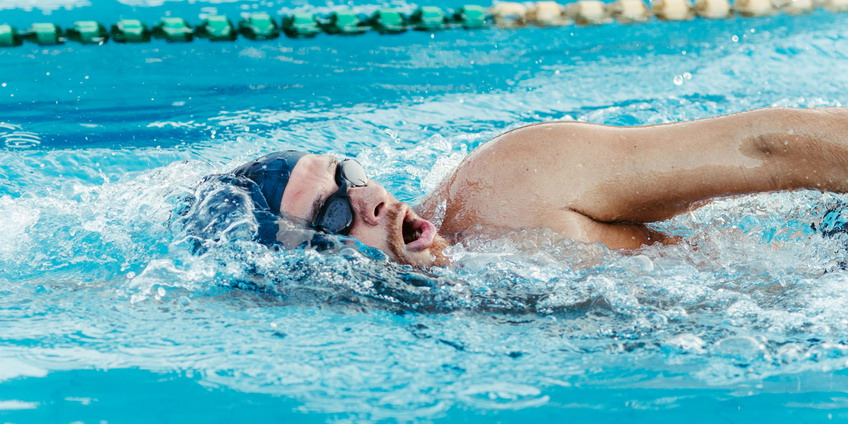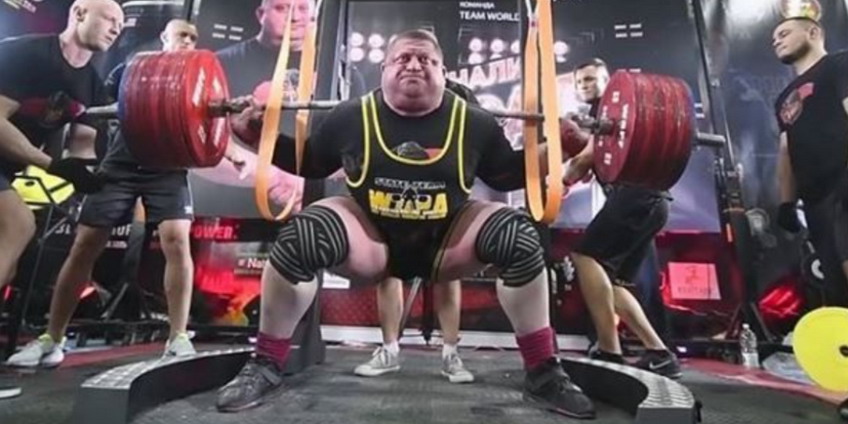022. Nature Wants You to Breathe Naturally

Experiment with different breathing methods and choose what feels natural to you personally in each particular situation.
Breathing is a must during any physical activity, so the general rule is to avoid constricting or stopping your breathing during any physical activity. It is very important to breathe the way it feels natural to you personally. In other words, let the Nature guide you how to breathe in each and every situation. Be open to try different styles of breathing, but never force yourself to accept anything uncomfortable. Here are a few breathing methods you can experiment with.
General Breathing Methods for Pushing and Pulling Movements
Pushing means generating force directed away from the body, like benchpress, overhead press, dips. Pulling movement means generating force directed towards the body, like in bentover row, upright row, pullups. Inhaling means filling lungs with air and exhaling means letting air out of the lungs. There are two general breathing methods for all pushing and pulling movements.
Method 1. Exhale whenever you generate force (part of the lift that requires more effort) and inhale during the reverse part of the lift (part of the lift that requires less effort). For example:
- Push and exhale, reverse and inhale.
- Pull and exhale, reverse and inhale.
Method 2. Exhale whenever shoulder girdle and rib cage are shrinking and inhale whenever shoulder girdle and rib cage are expanding. For example:
- Push and exhale, reverse and inhale.
- Pull and inhale, reverse and exhale.
As you can notice, breathing pattern during pushing movement is always the same and the only difference occurs in pulling movement. First method is more common and it applies well to all exercises. However, second breathing method seems to be more natural to some athletes, especially during aerobic high repetition pulling, like boat rowing, but also high rep barbell row, upright row, high pull, Aussie pullups, lean back pullups, etc. Even if you are not a boat rower, be encouraged to experiment with the second breathing method, because it may feel more natural and you may achieve better results.
Breathing for High Repetition Sets
Start a high repetition set with any of the normal inhale-exhale methods described above, but later in the set, when you need more oxygen, try to incorporate short pauses between reps to take a few shallow breaths before continuing the set. To make breaths short and shallow, you can control breathing by slowly sipping air through the teeth. Avoid large deep breaths, because they can cause dizziness.
Here is an example of breathing pattern for sets with high number of repetitions:
- Take several shallow breaths.
- Grab the bar, brace your abdomen and inhale.
- Lift and exhale during lift or hold breath and exhale at the end of the lift.
- At higher rep numbers, make a short pause and take a few shallow breaths.
- Inhale while reversing the lifting movement, when the bar goes down.
- Repeat.
If we take a deadlift as an example, you would inhale when the bar goes down and exhale when the bar goes up. When you start lacking oxygen at higher repetition numbers, you will make a short pause at the top amplitude position (when you stand straight), take a few shallow breaths and then proceed with another rep. You will continue using these breathing pauses after each rep and probably prolong the pauses towards the end of the set. Legendary Peary Rader believed that breaths in between reps help generating more force and enable use of heavier weights. Try and see if this applies to you.
Breathing for Heavy Lifting
If a heavy weight has to be lifted, breathing is never easy. Basically, you have 2 options here, to hold your breath during lift or keep on breathing normally. The question is when to hold breath and when to continue breathing. The answer is - do what feels natural to you. For example:
- If you perform just one heavy repetition, you will probably hold your breath during that single rep and get back to breathing after the lift.
- If you have to execute 2 heavy repetitions, you can still get away with holding your breath, although it would be better to breathe.
- If you have to execute 3 or more heavy repetitions, then some form of breathing would be necessary.
Prior to lifting a heavy weight, you should first take a few shallow breaths. Then inhale and hold your breath while bracing your whole body. Finally, execute the lift. At the moment of lift execution, you have 3 exhaling possibilities:
- Exhale during the lift (during execution of concentric part of the lift).
- Exhale when the lift is finished (after execution of concentric part of the lift).
- Keep holding breath and exhale when the lifting movement is reversed to the starting position (after execution of concentric and eccentric part of the lift).
Beside heavy weight, Olympic lifts are also bringing the longest barbell trajectory - from the ground up to the overhead position. Snatch technique is executed in a one smooth motion and weightlifter will probably hold his breath during the whole lift. On the other side, clean & jerk can be divided in 2 or 3 phases (clean-jerk or deadlift-clean-jerk). This division allows short pauses between phases, which are ideal for a few shallow breaths and strength recuperation. If you try heavier clean & jerk lift, pauses with breathing will probably come to you naturally, even if you had no intention to incorporate them in the lift.
In most cases, breath is predominantly inhaled and held in the abdomen area, not in the chest area. This is also called diaphragmatic breathing due to the engagement of diaphragm muscle which contracts to allow downward lung expansion. Only if you perform exercises for development of ribcage size, like pullovers or lat pulldowns, then you should focus on breathing with chest expansion, not with abdomen expansion.
WARNING: Holding breath and building abdomen pressure will improve the rigidity and stability of your trunk, which enables greater force generation. However, you should be aware that holding breath, building pressure in abdomen and compressing blood vessels inside the body may have a strong impact on blood pressure, heart beat and can cause dizziness, unconsciousness and even a blood vessel burst. Dizziness could be also caused by deep breathing, so it should be avoided too. There is a thing called Valsalva maneuver, which is popular among powerlifters, but it could be quite dangerous. Basically, you inhale and then intentionally prevent exhalation to build up pressure in the abdomen. It is a step further from ordinary breath holding and carries much higher health risks.
Breathing for “Time Under Tension” Style of Lifting
Spending more “Time Under Tension” has no purpose in training for power, but it is crucial for hypertrophy goals. Typical tools for increased TUT are slow lifting tempo and prolonged isometric stops along the lifting trajectory. Here is the usual and well known lifting-breathing style, with an example of possible timing:
Time: | 1.sec | 2.sec | 3.sec | 4.sec Breathing: | inhale | exhale | inhale | exhale Lift part: | eccentric | concentric | eccentric | concentric
This breathing cadence can not be applied in case of increased TUT, because lifting tempo is way too slow to be followed with synchronized breathing equivalent. Therefore, lifting and breathing will loose their typical correlation and we will end up with some asynchronous lifting-breathing sequence, which may look something like this:
Time: | 1.sec | 2.sec | 3.sec | 4.sec | 5.sec | 6.sec | 7.sec | 8.sec | Breathing: | inhale | exhale | inhale | exhale | inhale | exhale | inhale | exhale | Lift part: | eccentric ...................... | stop | concen | stop ......... |
Prolonged eccentric part of the lift is very common among bodybuilders and it requires breathing frequency to be independent of the lifting tempo. As we can see, lifting and breathing patterns significantly differ this time. Numerical translation of the described tempo is 4-1-1-2, where each number represents number of seconds dedicated to each part of the lift (eccentric-bottom-concentric-top).
Breathing During Rest Intervals
For power and strength goals, it would be the best to allow your breathing and heart rate to get back to normal, before proceeding with the next lifting set or next exercise. Optimal rest intervals between sets should last long enough to allow this, but not longer than that. If your heart still beats fast and your lungs scream for more oxygen, you should give them time to fully recover, to be able to give the best possible performance in the upcoming set. There is no sense in cutting rest short, while you still puff and pant. Rather focus all your efforts on lifting heavy, lifting fast and squeezing as many reps as possible.
However, if you want to improve cardiopulmonary condition or experiment with HIIT method for fat loss, then short rest times are welcome and highly desirable. Of course, you won’t be able to break any strength records, but elevated heart rate and breathing will certainly be beneficial in other physical aspects.
